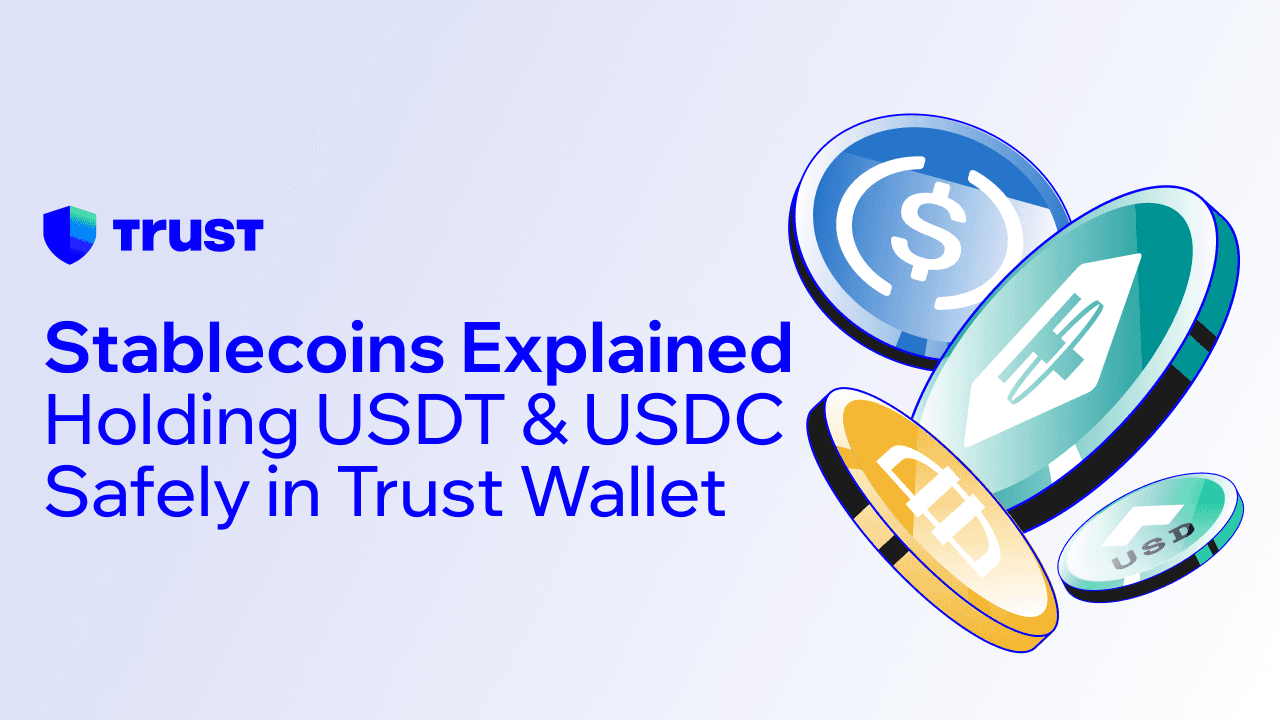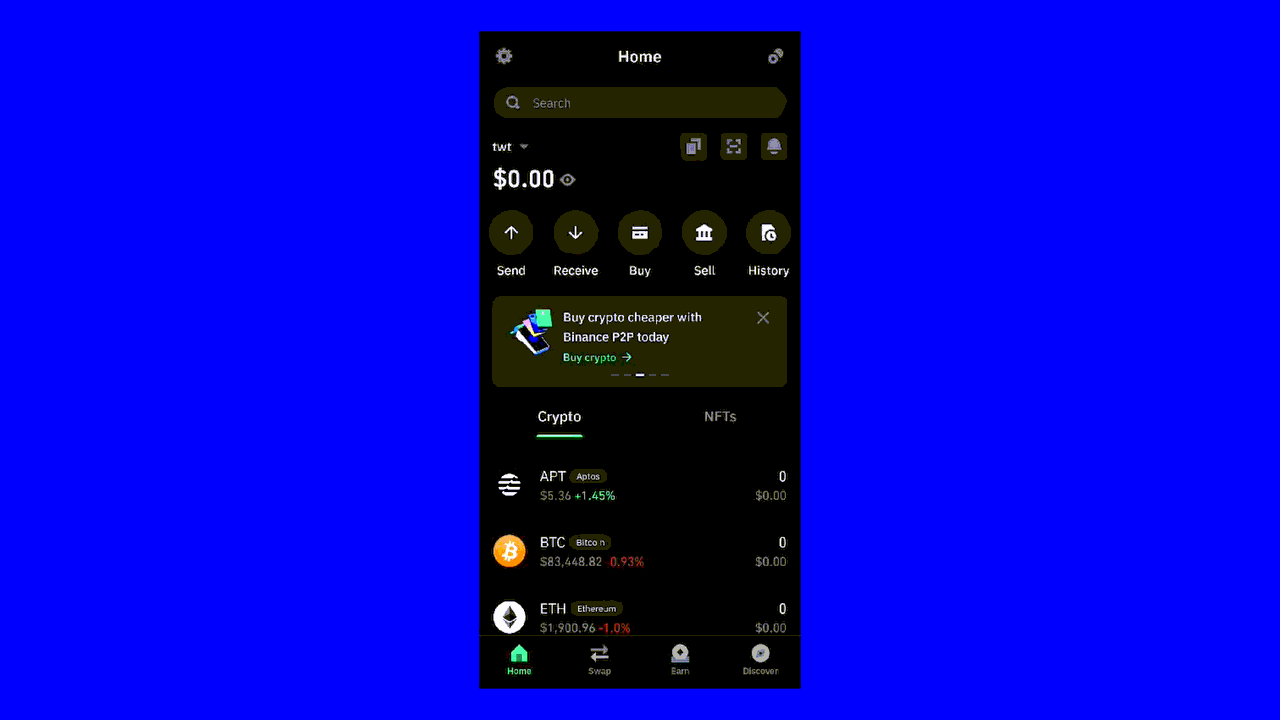Stablecoins
Stablecoins Explained: Holding USDT & USDC Safely in Trust Wallet
Share post
In Brief
Learn what stablecoins are, why USDT and USDC matter, and how to store them safely in Trust Wallet for secure payments, savings, and DeFi access.

Key Takeaways:
Stablecoins like USDT and USDC have a value that is tied to another currency or commodity, like the U.S. Dollar.
Stablecoins are widely used for payments, savings, trading, and DeFi because of their reliability.
Trust Wallet enables safe, simple, and secure storage of USDT and USDC under your full control.
Stablecoins have become an important part of cryptocurrency. If you are new to crypto, you may have already heard of names like USDT and USDC. Stablecoins give you the benefits of digital assets without the price swings that often make cryptocurrencies difficult to use on a daily basis. In this article, you will learn what stablecoins are, why they matter, how they are used in real life, and how you can safely hold USDT and USDC in Trust Wallet.
What Are Stablecoins?
A stablecoin is a type of cryptocurrency that holds a steady value, and is usually pegged to a strong fiat currency like the U.S. dollar. Stablecoins are built to stay near the value of the assets they are pegged to. The stability comes from the way they are backed, often by real-world reserves of cash or short-term government securities.
USDT (Tether) and USDC (USD Coin) are two of the most widely used stablecoins. Each token is issued to represent one U.S. dollar held in reserves. One USDT or one USDC in your wallet should always be close to the value of one dollar in the real world, making them much easier to use if you want predictability.
Why Stablecoins Matter
Stablecoins fill a critical role in the crypto ecosystem because they provide reliability. Cryptocurrencies offer freedom, speed, and global reach, but their prices can move sharply in minutes. S tablecoins make it possible to store digital value securely without constant changes in price,
Stablecoins also make it easier for people to move between traditional finance and digital assets. If you are earning income in crypto or sending money internationally, keeping it stable ensures the value is not lost along the way. Traders use stablecoins as a safe place to park funds between trades. Businesses can accept them for payments without worrying that their revenue will lose value overnight.
Stablecoins matter because they balance the reliability of traditional money with the flexibility of crypto.
Real-Life Use Cases
One of the clearest uses of stablecoins is digital payments. Instead of waiting days for an international wire transfer, you can send USDT or USDC in minutes. The recipient sees the same value you sent, without losing out as a result of price fluctuations. Stablecoins are especially useful for workers and businesses that deal with international partners.
Another everyday use is savings. People who want to keep their money in digital form without engaging with market volatility often use stablecoins as a safe storage option.
Stablecoins are also used widely in decentralized finance (DeFi). Services like lending platforms let people deposit USDT or USDC and earn rewards. Borrowers prefer these coins because they know exactly what value they are dealing with, which removes the risk of unpredictable price changes.
Many online companies have begun to accept USDT and USDC as payment, giving their customers faster, lower-cost options compared to traditional card networks or bank transfers.
Holding USDT and USDC in Trust Wallet
If you decide to use stablecoins, keeping them safe is important. Trust Wallet makes the process straightforward. Trust Wallet gives you full control of your assets without relying on a third party. When you hold USDT or USDC in Trust Wallet, you are the only person who has access to your private keys.
Adding USDT or USDC to your Trust Wallet is simple. You begin by downloading the app if you haven’t already. Trust Wallet supports USDC and USDT across multiple blockchains, so you can choose the version that best fits your needs. When you receive stablecoins, they will appear instantly in your wallet, ready for use.
How to Buy Stablecoins Using Trust Wallet
You can buy crypto, including stablecoins, using Trust Wallet, via our trusted partners. In this example, we have used Tether (USDT).Here’s how:
Select “Buy” from the home screen.
If using the mobile app:
Search “Tether” or “USDT” and select it.
Choose your preferred currency, then enter the amount of USDT you want to purchase.
Select the third-party provider & payment method you’d like to use.
Select the Buy button and complete the remaining steps.
If using the browser extension:
Choose your preferred currency and amount, then choose Tether (USDT)
Select your preferred third-party provider.
Complete the remaining steps.


Why Safety Comes First
When it comes to digital assets, securing them is as important as choosing the right coins. USDT and USDC may be stable in value, but you still need to protect them from theft or loss. Trust Wallet helps to give you peace of mind through secure private key storage and backup options.
You should always ensure your recovery phrase is stored safely offline and never shared with anyone. Your recovery phrase is your way of restoring access to your wallet if your device is lost or damaged. Since Trust Wallet is non-custodial, no one else can retrieve it for you, which is why protecting the phrase is vital.
Building Confidence with Stablecoins
The more you understand stablecoins, the clearer their usefulness becomes. USDT and USDC are digital assets for traders and practical tools for anyone who values stability while engaging with crypto. When you hold stablecoins in Trust Wallet, you combine their steady value with secure storage, creating a strong foundation for exploring the crypto space further.
Stablecoins give you the best of both worlds: the predictability of stable currencies and the convenience of crypto. With Trust Wallet, you can feel confident that your USDT and USDC are safe, accessible, and ready for your chosen uses — whether that’s payments, savings, or DeFi
Disclaimer: Content is for informational purposes and not investment advice. Web3 and crypto come with risk. Please do your own research with respect to interacting with any Web3 applications or crypto assets. View our terms of service.
Join the Trust Wallet community on Telegram. Follow us on X (formerly Twitter), Instagram, Facebook, Reddit, Warpcast, and Tiktok
Note: Any cited numbers, figures, or illustrations are reported at the time of writing, and are subject to change.




